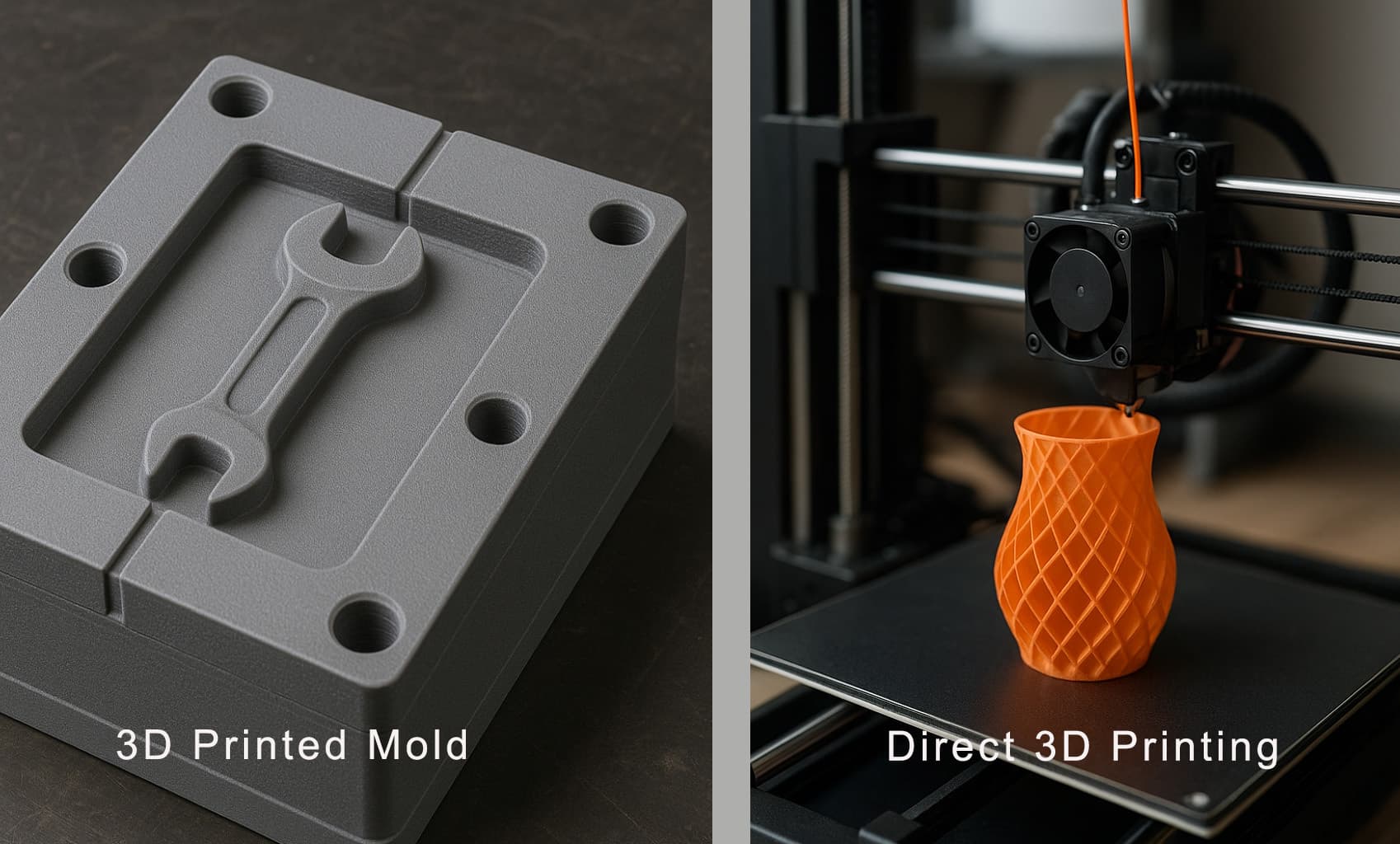Find The Right Prototyping Solution For Plastic Parts
Comparing 3D Printing vs. 3D Printed Injection Molds for Prototyping

The right prototyping approach can save valuable time and resources while delivering crucial insights. Inventors face an array of options—from rapid additive manufacturing technologies that can produce parts in hours to advanced molding techniques that better simulate production materials and finishes. The key is understanding which solution aligns with your specific needs for material properties, production quantity, budget constraints, and timeline requirements. By carefully evaluating these factors, you can chart the most efficient path from initial concept to market-ready innovation, ensuring your great idea becomes a tangible reality without unnecessary detours or expenses.
For thin walled plastic parts at the prototype stage, the two best ways to proceed are direct 3D printing and 3D printed injection molds. Below is a comparison
Direct 3D Printing
Advantages
- Speed for single parts: Fastest way to produce 1-10 parts
- Material variety: Access to hundreds of materials with different printers
- Design freedom: Able to create complex geometries, internal structures
- No tooling required: Zero setup time or tooling cost
- Iterative design: Quick changes between versions
Limitations
- Surface finish: Often shows layer lines
- Mechanical properties: Usually anisotropic (different strengths in different directions)
- Cost scaling: Becomes expensive for higher quantities
- Size constraints: Limited by printer build volume
3D Printed Injection Molds
Advantages
- Material authenticity: Parts made with actual production materials
- Economic for small batches: More cost-effective for 10-100 parts
- Better surface finish: Closer to production quality
- Consistent properties: Isotropic strength like final production parts
- Process validation: Tests actual injection molding process
Limitations
- Higher initial effort: Requires mold design and setup
- Two-step process: More time needed before first part
- Limited mold life: Typically 10-100 cycles before degradation
- Design restrictions: Must follow injection molding design rules
Decision Framework
Choose direct 3D printing when:
- You need 1-10 parts quickly
- Complex geometries are required
- Material properties aren't critical
- You're in early design validation stages
Choose 3D printed injection molds when:
- You need 10-100 identical parts
- Material properties must match production
- Surface finish is important
- You need to validate the injection process
- You're testing assembly fit with production materials
The decision ultimately depends on your specific project requirements, timeline, budget, and how close to production quality you need your prototype to be.
Invention City can help you design and prototype your invention. Contact us here.
share this article: facebook